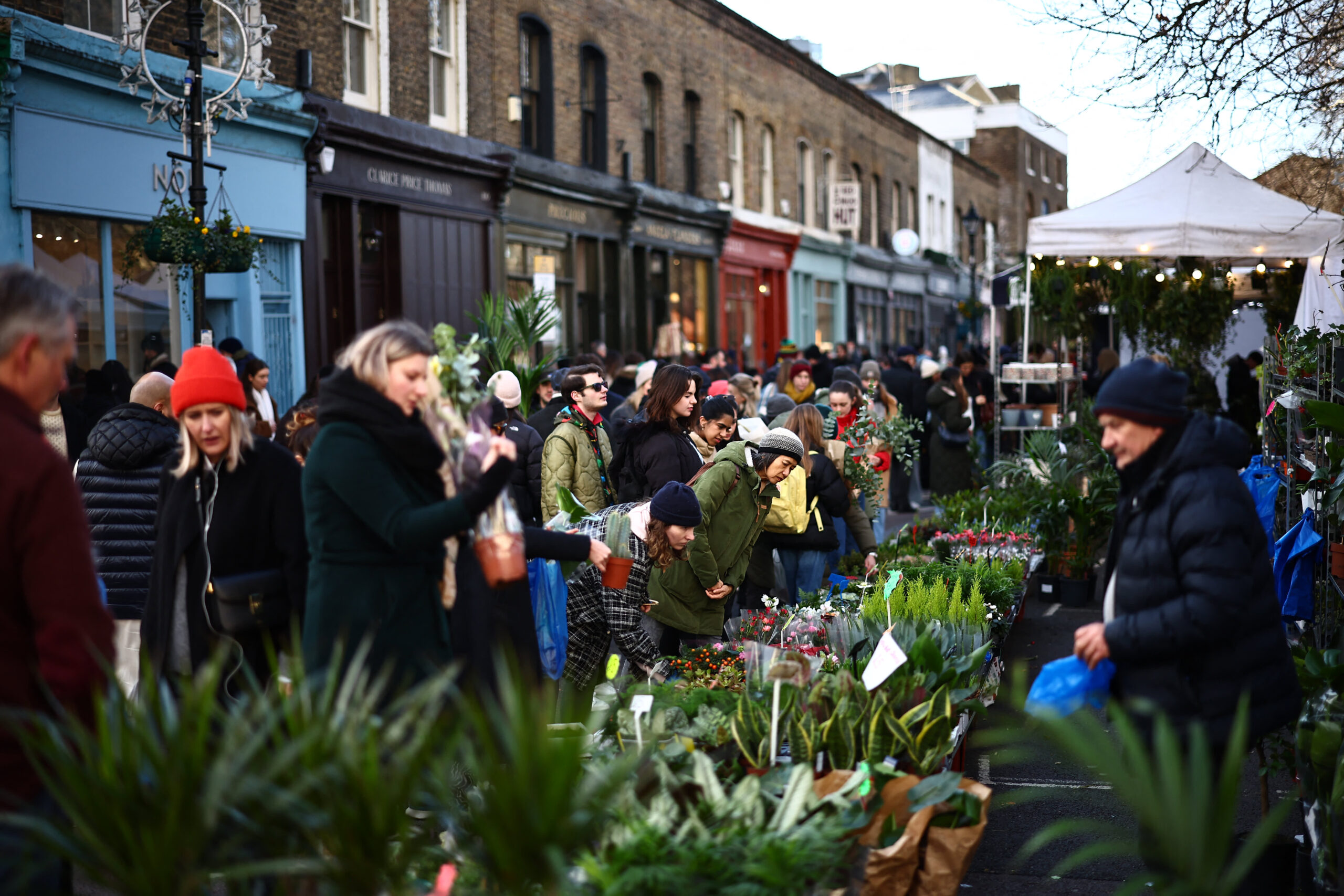
Customers buy flowers on stalls at Columbia Road Flower Market in East London.
Henry Nicholls | Afp | Getty Images
LONDON — U.K. inflation picked up sharply to a higher-than-expected 2.3% in October, data from the British Office for National Statistics showed Wednesday, tempering expectations of a December interest rate cut from the Bank of England.
The hike marks a sharp increase from the 1.7% rise recorded in September and exceeds the 2.2% forecast of economists polled by Reuters.
The latest print once again brings inflation above the Bank of England’s 2% target, potentially dampening the prospects of a final interest rate cut this year.
Sterling ticked up marginally following the latest inflation print, trading 0.1% higher at $1.2692 at 8:03 a.m. London time. The British pound was up 0.4% against the euro at 1.20 euros.
Core inflation, which excludes energy, food, alcohol and tobacco, came in at 3.3% for the month, up slightly from 3.2% in September.
The uptick was anticipated in part due to an increase in the regulator-set energy price cap that took effect in October, which is expected to lead to higher energy price inflation over the colder winter months.
Price rises in the U.K.’s dominant services sector ticked up moderately to 5.0% last month from 4.9% in September, hitting its lowest rate in more than two years.
“Inflation should drift gradually higher from here with rising energy bills, the impact of the Budget and global trade frictions likely to keep the headline rate hovering above the Bank of England’s 2% target until well into 2025,” said Suren Thiru, economics director at the Institute of Chartered Accountants in England and Wales.
Interest rates in focus
The data will feed into the Bank of England’s upcoming interest rate decision on Dec. 19, though one further inflation print is due before the meeting.
The central bank cut rates by 25 basis points earlier this month, but signaled that future rate cuts would be “gradual” amid renewed challenges to the economic outlook.
As of Wednesday morning, markets were pricing in just a 14% chance of a further quarter point trim this year.
Lindsay James, investment strategist at Quilter Investors, said the Wednesday inflation print had made it “increasingly likely” that the British central bank will close out the year with a hold on rates.
“This is a clear reminder that short term inflationary pulses may return, potentially caused by factors such as obstacles to trade, labour market tightness, taxation and volatility in food and energy prices,” James said.
“Whether October’s uptick in inflation proves to be just a blip remains to be seen, however it seems more likely that the Bank may err on the side of caution in coming months as a growing list of inflationary risks emerge on the horizon,” she added.
U.K. borrowing costs rose slightly on Wednesday, with 10-year gilt yields trading at 4.491%.
A cloud of uncertainty has been hanging over the U.K. over recent months, with the Labour government accused of talking down the economy following its July 4 election and of delaying to present its fiscal agenda.
U.K. Finance Minister Rachel Reeves delivered her Autumn budget on Oct. 30, announcing £40 billion ($51.8 billion) worth of tax rises to plug what she dubbed a “black hole” in the public finances, as well as changes to the U.K.’s debt rules to facilitate further public spending.
Commentators, including government-funded but politically neutral Office for Budget Responsibility, have warned that the measures were likely to push up inflation while raising the U.K.’s near-term growth outlook.
Globally, the prospect of trade tariffs under incoming U.S. President Donald Trump has raised the specter of further inflationary pressures in 2025.
EMEA Tribune is not involved in this news article, it is taken from our partners and or from the News Agencies. Copyright and Credit go to the News Agencies, email news@emeatribune.com Follow our WhatsApp verified Channel



